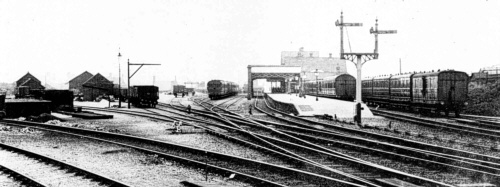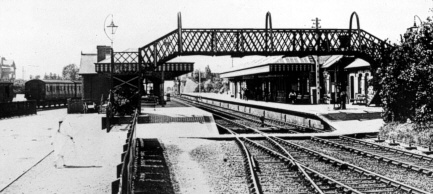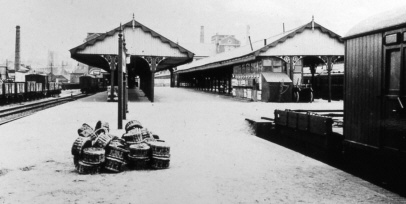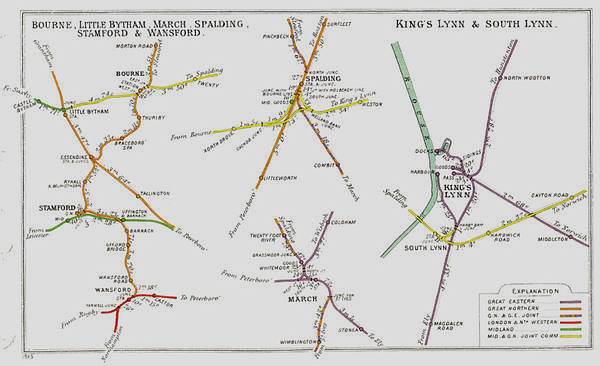A Brief History of the MGN
At the Grouping (1923), the Midland & Great Northern Joint Railway was Britain's largest joint railway with 186 route miles (297.6km). The line followed a cross-country route connecting Peterborough & Bourne to Yarmouth, Norwich, & Cromer. The Midland & Great Northern Joint Railway continued its existence as a joint railway after Grouping, with ownership shared with the London Midland & Scotland Railway. The LNER took over control of locomotives and running from October 1936.

The Midland and Great Northern gets its name from the two older companies which owned it before they became merged into the L.M.S. and the L.N.E.R. respectively. Until the creation of the M&GN, the Great Eastern Railway held a near-monopoly on East Anglian traffic and had assumed that their network meant there were no population centres left to connect. However, the GER lines were mostly north to south, centred on London, leaving an opening for the smaller companies that later became the M&GN to thread their way east to west between the GER lines, and in this way connected the major towns of Norfolk (Great Yarmouth, Norwich, King's Lynn) and many other smaller centres via the MR and GNR networks to the Midlands and the North. Much of the route was single-track, and the gradient profiles were steep. Despite this, the M&GN was able to put up a spirited competition with the shorter GER route to London from Cromer, although it was never able to equal the GER's excellent timings. However, King's Cross terminus (GNR) was nearer the west end of London, and some passengers preferred to use the M&GN route. The main thrust of M&GN services was to and from the Midlands. The goods traffic was also very heavy, particularly coal inwards, and fruit, vegetables, other agricultural products and fish outwards. Despite the most up-to-date methods (eg. electric train tablet system), season peak loads were difficult to handle on a route that was 60% single track.

The M&GN was not always a joint railway. More than one company owned and worked the lines which came under its joint Managing Committee, and the system had a decidedly chequered history. Of the old lines, the Eastern and Midlands was the most important, with its headquarters at King's Lynn in Norfolk, and was in its turn an amalgamation of two still older companies, the Yarmouth and North Norfolk and the Lynn and Fakenham. The amalgamation took place in 1883, ten years before the Joint Committee took over control. The other constituent companies were the Bourne & Lynn Railway and the Peterborough, Lynn & Sutton Bridge Railway.

Although M&GN operations were formally incorporated into the LNER in 1936, it remained heavily dependent on the LMS to provide the bulk of its longer-distance traffic. Most of the Melton Constable engineering centre was closed at this time, as was the Austin Street administrative headquarters in King's Lynn. The system remained jointly owned by the LNER and LMS.
With the creation of the nationalised British Railways in 1948, the M&GN looked vulnerable. It was one of the first major closures with the bulk of its routes shut in 1959; displaced traffic mostly transferring to the former GER routes.

Acknowledgement
Thank you to Malcolm Peirson for the above information.